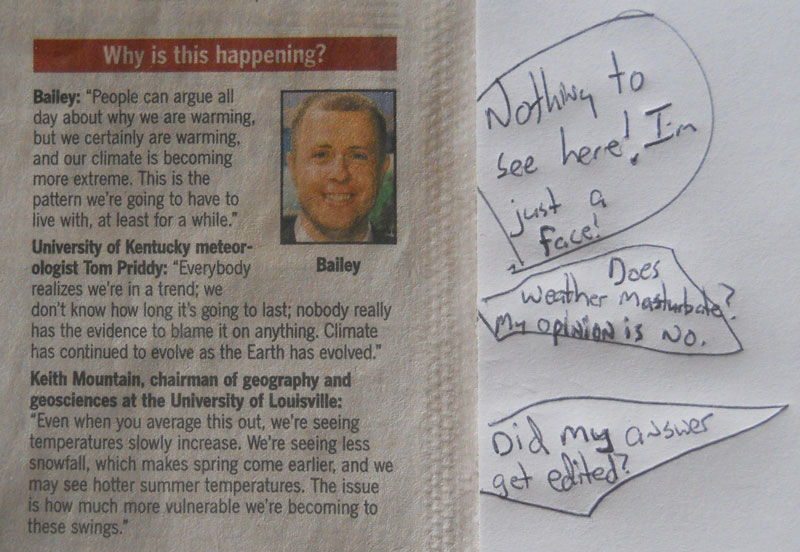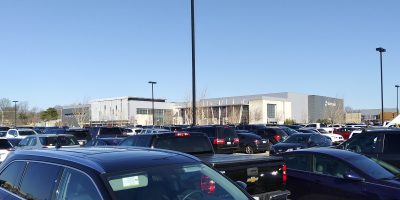By Danny Mayer
Last week, city leaders unveiled a fresh round of updates regarding plans for the Rupp Arena Arts and Entertainment District, known politically as the Rupp Opportunity Zone. Leaders envision a public/private/public urban development project that will link the city, UK and the downtown private business community. The centerpiece of the Opportunity Zone is Rupp Arena, home of UK basketball, whose renovation costs the city hopes to leverage to spur further development of the 47 city-owned convention center acres that it sits upon.
News last week centered on cost and design updates. First, a report cited by the Herald-Leader and other city leaders offered preliminary costs for renovating and building anew both the city’s convention center and Rupp Arena. For Rupp, costs ranged between $110 and $130 million (renovation) and $300 and $325 million (new construction). Convention Center costs ran between $70 million (renovation) and $100-130 million (new construction). In total, then, initial costs for the two public works projects ranged between $180 and $555 million.
Second, the Opportunity Zone’s master planner, Gary Bates, delivered a series of public lectures that sketched possibilities for fitting the site into the city fabric. Bates envisions a reconstructed Rupp Arena and Convention Center that replaces the Main/Limestone intersection as the city’s new epicenter. His lectures emphasized the area’s potential as a central hub of urban connectivity. There’s a Cat Walk and public gathering spaces to draw UK students from the south, a primed client base for the area’s western neighbor the Distillery District to draw upon, and a water trail (Town Branch) to pass through it and the rest of downtown. Bates even imagines a multi-modal transportation hub for train, bus, parking and bike routes.
Echoes of Festival Market
I bumped into mountaintop removal activist (and northside resident) Dave Cooper at the end of the Bates sermon delivered at the Lexington Children’s Theatre on Short Street. When I asked Dave what he thought about the presentation, he paused for a moment.
“I don’t know. It all sounds too perfect; I feel like I heard this a couple decades back with Festival Market.”
Festival Market, located katty-korner from Rupp Arena, was Lexington’s 1980s stab at public/private development. It used the design standards of its day for urban development, opened to great fanfare—and failed miserably. Dave’s comparison to Festival Market was not a favorable one. I know several people, good Jessamine County tobacco farmers, who still speak ill of Dudley Webb, the Lexington developer responsible for the development, because of the money they lost in what they described as “that downtown Ponzi scheme.”
“Festival Market? Well there’s a direct connection. Woodford Webb, Dudley’s nephew and co-developer of the failed CentrePointe block, sits on the Arena, Arts and Entertainment Advisory Group,” I replied. “He’s on the ‘Technical Advisory’ subcommittee, along with Mitch Barnhart and some other heavy hitters.”
What follows below isn’t exactly what Dave and I conversed about thereafter while anyone within earshot glanced our way nervously, but it is pretty close.
Problem 1: Misinformed public
Nearly all local media outlets covering the Rupp Re-do have taken the Citizen Task Force at their word. They have assumed that the task force has been diligent and faithful in collecting information on arena and convention center developments. Yet the two prime case studies cited in the Ruppdistrict.com website, Columbus, Ohio and Indianapolis, Indiana, nearly completely identify these areas as successful. Reading the task force data, one does not know that the Indy stadium authority has run an operating deficit of over $40 million a year. Or that the city of Columbus has had to bail out the private investor, Nationwide Insurance, who built (with city help) its entertainment complex. Most recently, the Columbus city council has proposed to divert tax money from a new local casino into a fund to pay for their forced purchase of Nationwide Arena (which had lost over 60% of its value in 11 years). As CBS described it, the bailout was developed “amid economic concerns about the district around the arena.”
Problem 2: Buildings without people
The Rupp District aesthetic is one of connectivity and vibrancy. But it is surrounded by large tracts of nothing. To its west, the Distillery District is one of the least dense and little populated census tracts in the county. The downtown census tract where Rupp resides, at 1500 residents, is equally sparse. Only the student tract to Rupp’s south—and toward UK—provides a dense population to feed the commercial block. Like Festival Market, the Rupp Entertainment District creates a commercial outlet where people do not exist. And to the degree that it does draw people in, the city seems to be directing public funds at stimulating a demographic of 18-25 year olds who travel in from out-of-town, hang out, and then leave for other work after their 4-7 year investment in the city comes to a close. Are they worth that investment?
Sometimes leadership means saying no
In April, University of Kentucky faculty and staff voted unanimously through their Faculty Council to deny a $3.1 million low-interest loan to the University of Kentucky Athletic Association. The money was to come from the school’s general fund and would be used to cover half the $6.25 million cost to replace the main scoreboard in Commonwealth Stadium.
To justify UK’s needed monetary support for the project, UK Athletic Director Mitch Barnhart claimed that the current scoreboard did not “provide the kind of sophisticated viewing experience that fans have come to expect across the country.” Barnhart envisioned the project as part of a $150 to $180 million renovation to the SEC home of the UK football team. Denied funding because faculty claimed that other university needs (infrastructure, tuition, salaries) claimed precedence, the Athletic Association eventually covered the $3.1 million itself by drawing from a source so obscure even the Herald-Leader had to scare-quote it as a “quasi-endowment” fund. Ultimately, the scoreboards were installed in time for IMG College to maximize its licensing fees, and for Friends of Coal to maximize its sponsorship space, at the early season matchup against cross-town rival Louisville.
Last week in describing the cost of Rupp renovations, the Herald-Leader listed six university “priorities” for the arena. Of this number, three (no lost seating capacity, uninterrupted play, and retain atmosphere) are achievable simply by doing nothing at all. The other three renovation priorities—the top three reasons for doing anything at all to the arena and the district—include new or upgraded support spaces like a media room or kitchen; a few new premium seats; a “President’s” room; and “new technology including a center-hung scoreboard—perhaps eight-sided—that would display the score, player stats, show instant replays of the game and have close-up shots of coaches and players.”
Unlike the faculty council who denied the University scoreboard funds, Mayor Jim Gray and the cast of private business leaders who have shaped the dialogue on Rupp thus far seem more than willing to play ball. They seem to accept, and want you to accept, too, that at a minimum $130 million should go toward creating a couple seats, a couple rooms, and a killer scoreboard.
Things build from that assumption. Once you accept that $130 million or more is better spent on Rupp Arena than, say, rebuilding workable neighborhoods, bolstering the police force, or thoughtfully upgrading the parks that litter our county—once you accept that Rupp deserves that money to do those petty things—then asking you to also accept another $70 million more for another convention center right next door makes a bit more sense. And, later, so will the money for the submerged parking garages. And the necessary Distillery District infrastructure.
And then there’s the interest and charges on the principal. In the case of Louisville’s YUM Center, $339 million in bonds netted the city a total debt of $573 million spread over 30 years.







Leave a Reply